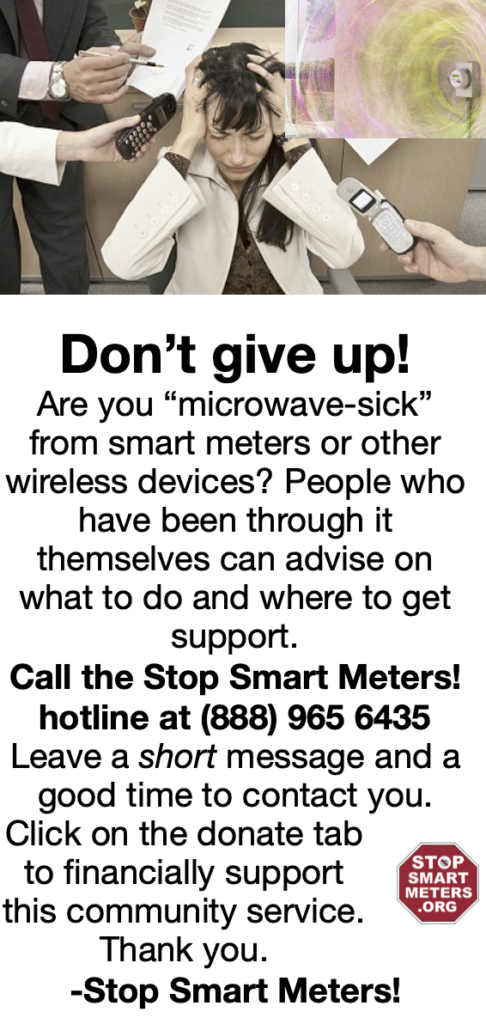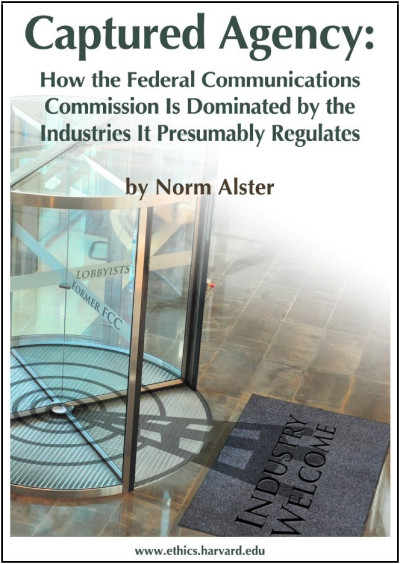 Last week, the Maine Supreme Court sided with the corrupt Maine Public Utilities Commission’s finding that smart meters are “safe enough.” Meanwhile on the other side of the country in Berkeley, CA, U.S. District Court Judge Chen ruled against the CTIA (cell phone industry association) and ordered Berkeley’s health warnings on cell phones upheld.
Last week, the Maine Supreme Court sided with the corrupt Maine Public Utilities Commission’s finding that smart meters are “safe enough.” Meanwhile on the other side of the country in Berkeley, CA, U.S. District Court Judge Chen ruled against the CTIA (cell phone industry association) and ordered Berkeley’s health warnings on cell phones upheld.
We have a question, looking at these two rulings together:
How can one court decide that the evidence for RF harm, and existing language in cell phone manuals, justify warnings at the point of sale, but devices that emit the exact same type of radiation mounted on your home (perhaps across the wall from where your baby is sleeping) not only do not require warnings, but are allowed to be forced on your home, with extortion fees charged to avoid the risk?
Some have leveled charges of back room deals, and corruption spreading into the court system. Whatever the case, Maine’s ruling needs to be taken with a grain of salt. As lead plaintiff Ed Friedman states in the press release put out by the Maine Coalition to Stop Smart Meters, over 1000 peer-reviewed studies indicating harm were rejected by the PUC because the pile of evidence was becoming too large. Maine Coalition to Stop Smart Meters Press Release states:
“While the decision acknowledges over one hundred peer-reviewed scientific studies were reviewed by the Commission, what the Court doesn’t admit is over 1,000 peer-reviewed study citations and verbatim abstracts of supporting studies submitted into evidence by anti-smart meter activists were rejected by the PUC because ‘somehow we need to whittle down the amount of evidence.’ The Court has miserably failed the people of Maine, instead relying on CMP supplied evidence from the FCC [FCC exposure standards admitted by even the PUC to be obsolete and irrelevant],Trilliant [vendor for the smart meter project], Exponent [a well-known product defense firm], and the Maine CDC finding from 2010 [a 2-week rush job about which the CDC admittedly knew nothing and that predated both this investigation and the WHO classification of RF as a possible human carcinogen].”
“The Court ignored when they needn’t have, independent testimony from international experts on the credible threat of harm RF exposures at smart meter levels pose and instead chose to believe the “Marlboro Man” that smoking is good for us. The Law Court has despite ample evidence we were not legally required to submit [with the burden of proof on CMP] rejected Maine’s judicial maxim-the health of the people is the supreme law.”
Berkeley’s advisory mandated at cell phone retailers, goes into effect March 22nd and states:
“To assure safety, the Federal Government requires that cell phones meet radio frequency (RF) exposure guidelines. If you carry or use your phone in a pants or shirt pocket or tucked into a bra when the phone is ON and connected to a wireless network, you may exceed the federal guidelines for exposure to RF radiation. Refer to the instructions in your phone or user manual for information about how to use your phone safely.”
For questions on the Maine court case and ruling: edfomb[at]comcast[dot]net
For questions on the Berkeley ordinance: cabta[at]ellenkmarks[dot]com








